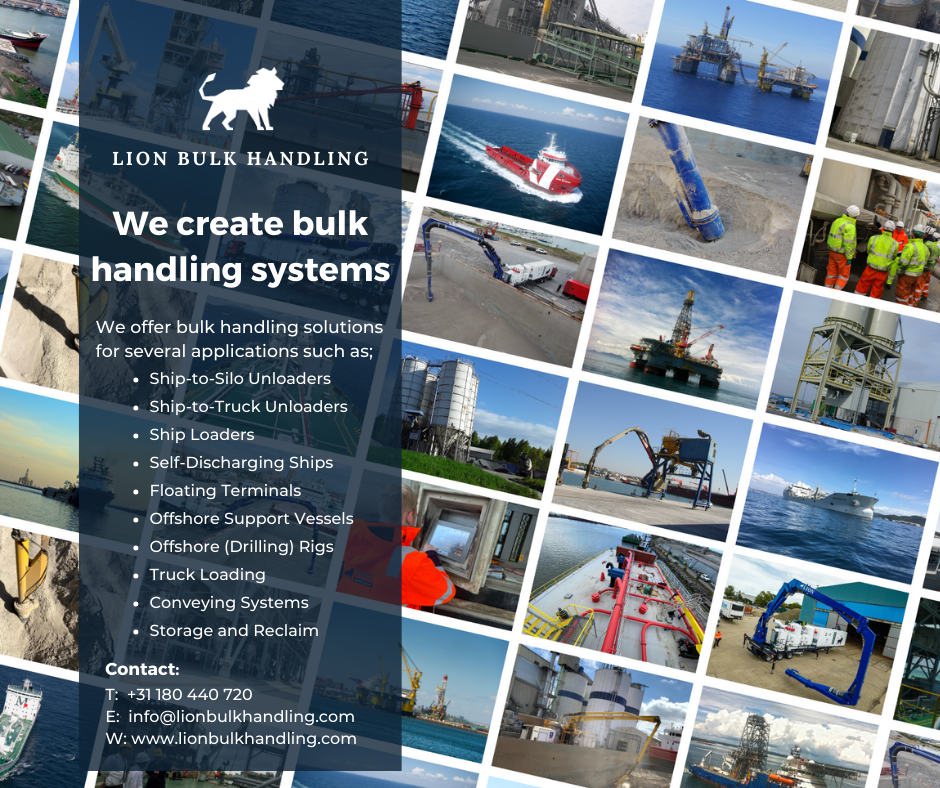Pneumatic Conveying vs Golf Sport – The Flow Engineers

In the bulk handling industry, efficiency and flexibility are paramount. At Lion Bulk Handling, we understand the diverse needs of our clients and strive to offer tailored solutions. Today, let’s explore the comparative advantages between our Ship-to-Silo and Ship-to-Truck Pneumatic Ship Unloaders:
Pneumatic Conveying vs Golf Sport:
Aerodynamics is, therefore, a big part of our business and responsibility, but what is aerodynamics? Aerodynamics is the way air moves around things. The rules of aerodynamics explain, for example, how an aeroplane can fly, why a golf ball can fly (for a moment) and even how we can convey dry materials using air. Anything that moves through air reacts to aerodynamics. A rocket blasting off the launch pad and a kite in the sky react to aerodynamics. Aerodynamics also acts on cars since the air streams around vehicles while moving.
To make an object fly, there are four forces of flight needed.
The four forces of flight are; lift, weight, thrust and drag. These forces make an object move up and down and faster (moving forward) or slower— the amount of each force influence how the object moves through the air.
Golf ball vs dry material grain
So, what are the similarities between the aerodynamics of a golf ball and a grain of dry material (for example, cement)? First, both objects have a somewhat round shape but do not have a smooth surface. At micro size, the cement grain looks like a potato. So, a grain of cement has all kinds of uneven dimples on its surface, and a golf ball has its dimples evenly spread over the complete ball. But what do these dimples (and a potato shape) have to do with pneumatic conveying or aerodynamics?
A smooth golf ball hit by a professional golfer would travel only about half as far as a golf ball with dimples.
Dimples also affect lift. A smooth ball with a backspin creates lift by warping the airflow such that the ball acts like an aeroplane’s wing. The spinning action makes the air pressure on the bottom of the ball higher than the air pressure on the top; this imbalance creates an upward force on the ball. Ball spin contributes about one-half of a golf ball’s lift. The other half is provided by the dimples, which allow for optimization of the lift force.
It is therefore understandable that the dimples within a cement grain are perfectly suitable for transporting by air. The tricky part of pneumatic conveying dry bulk materials (like cement, barite, bentonite, fly-ash alumina, etc.) is to balance all forces of flight and the needed energy consumption. Lion’s speciality is finding the most optimal balance for your bulk handling situation. For example, we explained the comparison between pneumatic conveying of dry bulk and golf sport.
If you have questions regarding pneumatic conveying or dry material flow, contact our Lion Bulk Handling team or leave a response in the comment section.
More information: https://lnkd.in/edqAje8a

Lion Bulk Handling Solutions
In conclusion, investing in efficient bulk handling systems is paramount for businesses looking to streamline their operations and maximize productivity. Whether you’re in the manufacturing, cement, offshore or maritime industry, optimizing your material handling processes can lead to significant cost savings and improved efficiency.
If you’re interested in learning more about how bulk handling systems can benefit your business, don’t hesitate to reach out to us. Our team of experts is here to provide you with tailored solutions and answer any questions you may have. Contact us today for more information and take the first step towards enhancing your operations.


